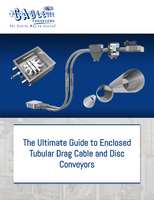Servos Improve Resistance Welding Quality and Speed
Although invented over 100 years ago, the resistance welding process, commonly called spot welding, has never been considered an exact science.
With three main variables at work - welding current (amps), weld time (duration of current flow), and welding pressure (forging force) - consistent spot welding quality has been hard to guarantee.
However, with the advent of modern electronic controls, which include features like exact timing and constant current, the resistance welding process has become much more reliable.
But the third variable, weld pressure, has always been harder to control, since pneumatic air cylinders are typically used to forge the weld when the resistance of the parent material to current flow causes it to reach a molten state. Problems with pneumatic systems on resistance welders include:
• Shop airline pressure variations
• Accumulated dirt and moisture in the system
• Sticky solenoid-operated air valves
• Worn out air cylinder seals and walls
Consistent control of variables is critical to producing strong resistance welds, but when pneumatic cylinders have problems, forging force can vary from one weld to the next.
Enter the modern electrically operated linear servo actuator, which is now replacing some traditional pneumatic weld force systems on resistance welders. Servos are nothing new to the resistance welding world, as auto manufacturers have used servo-actuated welding guns manipulated by robots for several years. However, most of the standard press-type pedestal welders commonly used for spot and projection welding have remained air-operated …. until now.
At T. J. Snow, we researched and developed a servo system that would work on the stand-alone and multi-gun welders that are our core business. Our system can be used on standard AC welders and on machines with newer MFDC Inverter-type power supplies.
Another goal was to develop a user-friendly system that any operator could set up quickly in a two-step process, which was achieved by incorporating an interactive interface that features graphics and a help menu.
Benefits:
• 'Slow approach' feature, which minimizes electrode wear and improves weld appearance
• Generates weld force almost instantly
• Built in monitors to verify proper part stack-up and monitor electrode wear
• Lower operating costs – no need for expensive and dirty compressed air
• Improved weld force repeatability
• Set-down monitor, including programmable limits for projection welding
• Retractable stroke, if needed
• Documentation of weld variables (as each weld is made, the current, force and set down values are logged)
Although more expensive than pneumatically- operated resistance welders, servo-actuated machines are being well received by customers who are focused on improving weld quality and increasing operating speeds.




